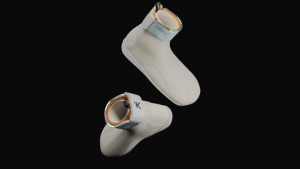
Ian Burkhart was paralysed in a driving accident six years ago. Now, thanks to a NeuroLife implant, he is able to grasp and swipe a credit card or play a guitar video game with his own fingers and hand. The prototype medical system is driven by the user’s own thoughts.
Published in the scientific journal, Nature, NeuroLife is a small chip implanted in Burkhart’s brain that interprets thoughts and brain signals then bypasses his injured spinal cord and connects directly to a sleeve that stimulates the muscles that control his arm and hand.
"We're showing for the first time that a quadriplegic patient is able to improve his level of motor function and hand movements," said Dr. Ali Rezai, a co-author of the study and a neurosurgeon at Ohio State's Wexner Medical Center.
Burkhart can now perform tasks like picking up a spoon or picking up and holding a phone to his ear -- things he couldn't do before and which can significantly improve his quality of life.
"It's amazing to see what he's accomplished," said Nick Annetta, electrical engineering lead for Battelle's team on the project. "Ian can grasp a bottle, pour the contents of the bottle into a jar and put the bottle back down. Then he takes a stir bar, grips that and then stirs the contents of the jar that he just poured and puts it back down. He's controlling it every step of the way."
Burkhart said his participation in the study is his obligation to society: "If someone else had an opportunity to do it in some other part of the world, I would hope that they would commit their time so that everyone can benefit from it in the future."
He added that the study had given him hope. "I always did have a certain level of hope, but now I know, first-hand, that there are going to be improvements in science and technology that will make my life better."
The team plans to improve the system over time. "We're hoping that this technology will evolve into a wireless system connecting brain signals and thoughts to the outside world to improve the function and quality of life for those with disabilities," Rezai said. "One of our major goals is to make this readily available to be used by patients at home."




